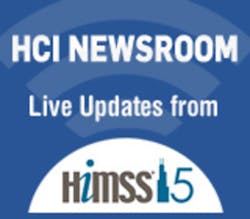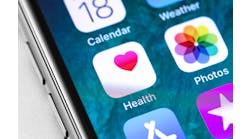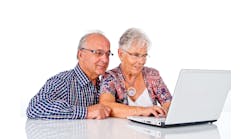On April 12 at the HIMSS15 pre-conference patient engagement symposia at McCormick Place in Chicago, clinician leaders continued to push a healthcare in which patients are the focus, reiterating the benefits of giving patients access to their data.
Most of us are pretty familiar with the ongoing OpenNotes project, an initiative that began in 2010 when more than 100 primary care doctors from three diverse medical institutions across the U.S. began sharing notes online with their patients. During the symposia, Susan Woods, M.D., general internist and informaticist at the Augusta-based VA Maine Healthcare System, spoke about MyHealtheVet, the VA's patient portal that began with 7,000 VA patients in nine facilities getting full access to their health record information. "We gave those patients access to their notes, and guess what? The sky didn't fall," Woods said. In fact, she added that patients reported extreme satisfaction with the new ability, with some even going as far as saying that it was "the best tool that VA ever developed."
Woods, who is also the Veterans Health Administration's Connected Health Office's director of patient experience, said that there is an expectation that comes along with clinician notes—that all of the notes are mistake-free. "Well, that is a wrong assumption," Woods said. "What's more appropriate is that the note will be available and will get better over time," she said, a comment that garnered applause from the audience. As such, when VA asked its patients why they wanted to see their notes, 26 percent ranked "knowing more about my health" highest, while 21 percent ranked "wanting to know what the doctor said" highest. These results, directly from the patients' mouths, help prove the point that patients are willing to become more engaged in their own care.
p>Of course, when patients are getting such unprecedented access to their notes, fears are raised—most notably doctors being less candid with their notes, and also patients getting unnecessary anxiety from the content of the notes. To this end, while Woods noted that clinicians were worried that they were going to get calls "out of the woodwork,"the facts speak for themselves: about 90 percent of surveyed patients said they didn't need to talk to their doctor after reviewing the notes. "Often, people underestimate the value of this ability and, overestimate the negative consequences," said Woods.
Jan Walker, R.N., assistant professor at the Boston-based Beth Israel Deaconess Medical Center (BIDMC) and co-director of the OpenNotes initiative, provided more data to further prove that the positives outweigh the negatives. BIDMC was one of the three test sites for the original one-year pilot, and the results from there found that providers' workflows were so minimally impacted that they would sometimes ask if "this thing was going on," Walker said.
p>Indeed, just 2 percent of participating providers (Walker noted that two-thirds of physicians who were originally asked to participate declined) reported longer visits with patients as a result of OpenNotes, and 3 percent reported spending more time on patient questions. Additionally, the doctors' email volume did not change at all, and not one of them stopped participating after the one-year pilot was completed. "Patients have even said they don't want notes altered because doctors might be hesitant to include something," Walker said. "They have told us, "just give it to us how you normally would.'" Now, Walker said, more than 4.8 million patients have access to their notes as a result of OpenNotes.

